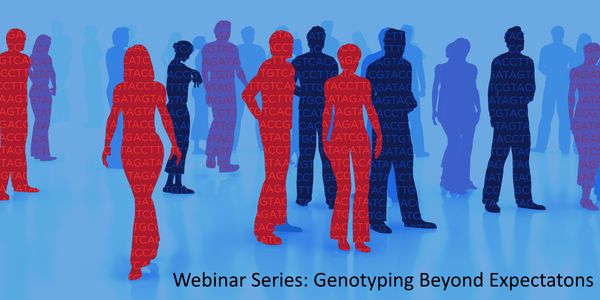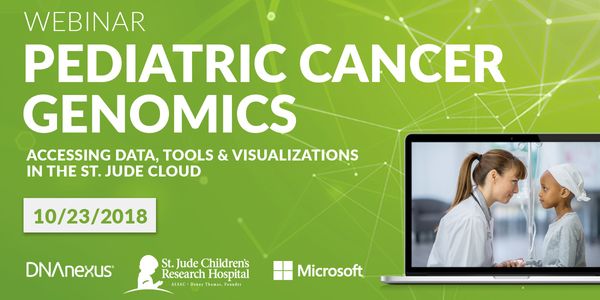Genomic analysis
Genomic analysis is the identification, measurment, and/or comparison of genomic features (like DNA sequences) on a genomic (i.e., the study of all of a person's genes) scale.
-
Approximately 30% of drugs have failed in human clinical trials due to adverse reactions despite promising pre-clinical studies, and another 60% fail due to lack of efficacy. The NIH Tissue C...Speaker: Danilo Tagle, PhD, M.S.Presented at: Laboratory Animal Sciences Virtual Event Series 2019
DEC 18, 2018 | 10:00 AM
DATE: December 18, 2018TIME: 10:00am PST, 1:00pm EST Precision medicine anticipates the clinical application of whole-genome sequencing (WGS), as evidenced by the...
NOV 28, 2018 | 7:00 AM
DATE: November 28, 2018TIME: 7:00AM PSTSingle-cell genomics enables a deep dive into the mechanisms responsible for health and disease, in areas from cancer biology to neurob...
Speaker:
Bernard Thienpont
, Annika Branting
, Pawel Zajac, Ph.D.
Sponsored By: Illumina,
10x Genomics
QIAGEN helps your team focus on the opportunities, not the obstacles, with an end-to-end clinical testing solution. During this talk, we will present a lung cancer case study to show how QIAG...
Speaker:
Raed Samara, PhD
, Dan Richards, PhD
NOV 15, 2018 | 7:00 AM
The use of human pluripotent stem cells (hPSCs) for in vitro disease-modeling is limited by the lack of robust and efficient protocols for the differentiation of relevant adult cell types. Pr...
NOV 15, 2018 | 4:00 AM
Development of physiologically relevant cellular models, with strong translatability to human pathophysiology, is critical for identification and validation of novel therapeutic targets. Cell...
As the compendium of putatively disease causing variants expands, gathering the most current and accurate information is critical to computing variant classifications. The QIAGEN knowledgebas...
Speaker:
Jennifer Poitras, PhD
With significant decrease in the cost of sequencing in numerous commercial as well as cancer center–driven initiatives, genomic profiling is increasingly becoming routine across multipl...
Speaker:
Bing Zhou, PhD
NOV 14, 2018 | 8:00 AM
DATE: November 14, 2018TIME: 08:00am PST, 11:00am EST International Genetics & Translational Research in Transplantation Network (iGeneTRAIN) has recently generated genome...
OCT 30, 2018 | 9:00 AM
DATE: October 30, 2018TIME: 9:00AM PSTMass spectrometry-based proteomics is a rapidly growing area of research that provides useful information for many fields including basi...
Speaker:
Sandra Spencer - Ph.D. Analytical Chemistry, BS Chemistry, minor Mathematics, BS Biochemistry, minor Spanish
OCT 23, 2018 | 10:00 AM
DATE: October 23, 2018TIME: 10:00am PDT, 1:00pm EDT Next-generation genomic sequencing is transforming what is known about pediatric cancer and how we treat patients. But eve...
OCT 23, 2018 | 9:00 AM
DATE: October 23, 2018TIME: 9:00AM PDTIxodes scapularis is the principal vector of the Lyme disease spirochete, Borrelia burgdorferi. I. scapularis genome was the first and only...
Recent work has identified epigenomic features of distal regulatory elements to be dynamic and defining indicators of cellular specification and transformation. Of particular relevance is our...
Speaker:
Martin Hirst, PhD
Lung cancer is the leading cause of cancer-related mortality worldwide. Large-scale sequencing studies have revealed the complex genomic landscape of NSCLC and genomic differences between lun...
Speaker:
Nicholas McGranahan, PhD
Two projects looking at novel approaches to targeting inflammatory breast cancer will be presented. Inflammatory breast cancer (IBC) is a unique, understudied, and most lethal subtype account...
Speaker:
Kevin Williams, PhD
In the last two decades, large amount of next-generation sequencing (NGS) and -omics data has been generated in the field of immuno-oncology. Generating hypotheses by analyzing hundreds if no...
Speaker:
Devendra Mistry, PhD
























